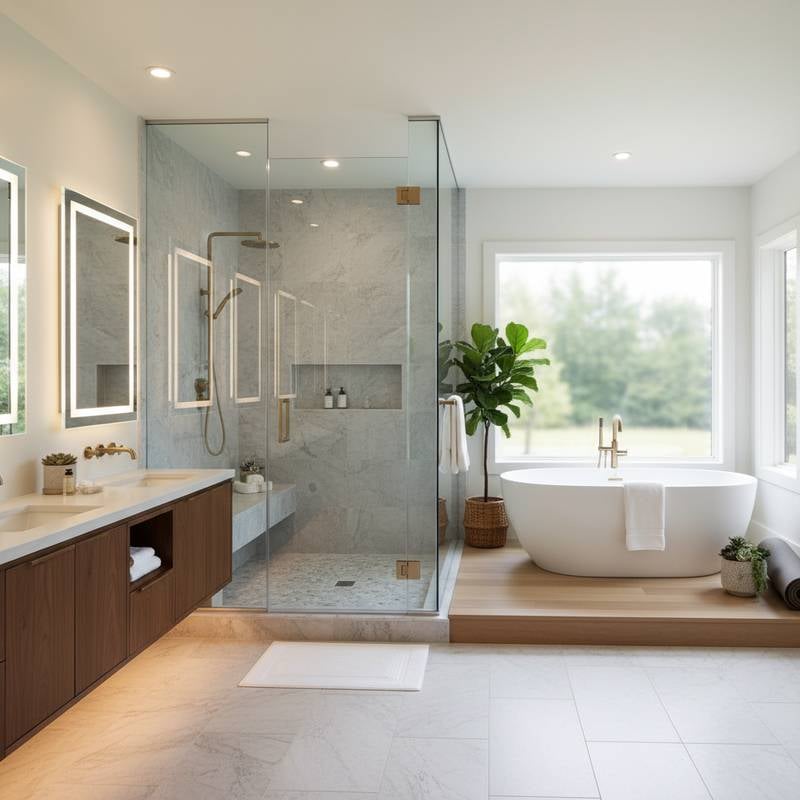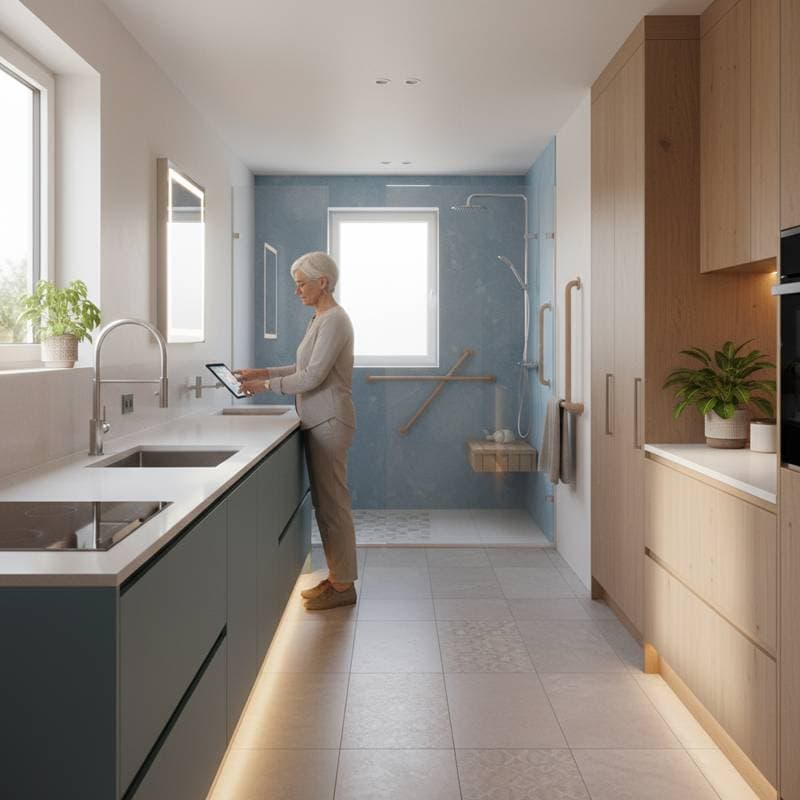- Position appliances at reachable heights, such as microwaves at counter level.
Verification Step: Perform routine tasks like chopping vegetables from a stool; assess if all essentials remain accessible without strain.
6. Upgrade Illumination and Surfaces
Install layered lighting with overhead fixtures, task lamps, and motion-sensor strips to illuminate shadows in hallways and stairs. Choose warm LED bulbs that provide 3000 lumens per room without harsh glare. Replace loose rugs or polished floors with low-pile, high-traction materials like cork or vinyl composites.
- Integrate automatic switches near beds and doors for nighttime convenience.
Verification Step: Walk through at dusk; confirm even coverage eliminates dark spots on steps.
7. Facilitate Outdoor Entry
Construct ramps with a gentle 1:12 slope ratio, ensuring the surface rises no more than one inch per foot of run. Add 42-inch handrails on both sides, extending beyond the ramp ends for safe transitions. Use weather-resistant materials like composite decking for longevity.
- Incorporate landings at top and bottom for resting points.
Verification Step: Test stability by walking the full length; rails should withstand lateral pressure.
Troubleshooting Common Issues
Address problems promptly to maintain safety and functionality.
- Wobbly Grab Bars: Reinforce by drilling into wall studs or deploying heavy-duty toggle bolts rated for 300 pounds.
- Sloping or Bumpy Floors: Employ a 4-foot level to detect variances over 1/8 inch; shim subfloors as needed.
- Shower Drainage Problems: Regrade the floor pan toward the drain or install a linear drain system.
- Excessive Light Reflection: Install diffusers on fixtures or select matte-finish bulbs to reduce eye strain.
Engaging Professional Help
Seek certified contractors for tasks involving load-bearing walls, pipe rerouting, wiring updates, or extensive tile work. These experts ensure code compliance and warranty-backed results.
Cost Breakdown:
- Grab bars and lever handles: $150 to $400 per unit.
- Roll-in shower conversion: $5,000 to $15,000.
- Doorway expansion: $800 to $2,500 per opening.
- Exterior ramp: $2,000 to $8,000.
- Complete home retrofit: $25,000 to $100,000.
Obtain multiple detailed bids, check credentials through state licensing boards, and scrutinize contracts for scope, timelines, and payment schedules.
Strategies for Effective Planning
Phase modifications to manage budgets and disruptions, beginning with critical safety elements. Employ color contrasts, such as dark mats on light floors, to aid visual navigation. Maintain 36-inch clearances in corridors and equip them with ample illumination. Select durable, low-maintenance materials like stainless steel fixtures and antimicrobial surfaces. Involve end-users in testing to refine adjustments for optimal comfort.
Frequently Asked Questions
Does installing grab bars require a building permit?
In most jurisdictions, simple installations do not, but consult local authorities for projects affecting plumbing or structure.
What is the timeline for a complete universal design overhaul?
Expect one to six weeks, influenced by home size, material availability, and contractor scheduling.
How can I budget for unexpected expenses?
Allocate 10 to 20 percent of the total for contingencies like hidden repairs or material price fluctuations.
Sustaining Accessibility Over Time
Regular inspections every six months preserve the integrity of modifications. Clean surfaces with mild solutions to avoid residue buildup that could compromise traction. Update lighting as bulbs age to sustain visibility. Monitor usage patterns and adjust features, such as repositioning controls, to match evolving needs. These practices extend the lifespan of investments and support ongoing independence.











